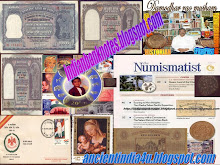Taranatha was born at Karag in the hereditary line of the great Tibetan translator Ra Lotsawa Dorje Drak. His Tibetan name was Kunga Nyingpo, but he is generally known by the name Taranatha, which he received in a vision from a great Indian adept. When he was about one year old he declared, “I am master Kunga Drolchok!” But this was kept secret for several years, and it was not until he was about four years old that he was brought to Kunga Drolchok’s monastery of Cholung Changtse and formally recognized as his incarnation. He then began years of intense study and practice under the guidance of a series of great masters, many of whom had been major disciples of Kunga Drolchok.
Guided by Kunga Drolchok’s disciple Jampa Lhundrup, Taranatha first studied and mastered various subjects of sutra and tantra. Then he received a vast number of tantric teachings and initiations, primarily of the Sakya tradition of Lamdre, from another of his predecessor’s disciples, Doring Kunga Gyaltsen. Kunga Drolchok’s disciple Dragtopa Lhawang Dragpa taught Taranatha many esoteric instructions, especially the Six Yogas and Mahamudra, which caused a sublime primordial awareness to arise in the young prodigy’s mind. Jedrung Kunga Palsang, who was Kunga Drolchok’s nephew and successor on the monastic seat of Jonang, transmitted to Taranatha the teachings of Kalacakra and the Dharma protector Mahakala that he had received from his uncle. From Kunga Drolchok’s disciple Lungrik Gyatso, Taranatha received many transmissions, especially the Kalachakra initiation, the explanation of the Kalachakra Tantra, the esoteric instructions of the sixfold yoga according to the Jonang tradition, and the collected writings of dharma lord Dolpopa Sherab Gyaltsen. He gained a special experiential realization when he practiced the sixfold yoga.
When Taranatha was fourteen years old, the Indian adept Buddhagupta-natha arrived in Tibet. This master became one of Taranatha’s most important teachers, passing to him countless transmissions of tantric initiations and esoteric instructions. Taranatha stated that his understanding of the secret mantra teachings was due to the kindness of Buddhagupta-natha alone. Several other Indian yogins and scholars, both Buddhist and non-Buddhist, came to Tibet during Taranatha’s lifetime, such as Balabhadra, Nirvanasri, Purnananda, Purnavajra, and Krsnabhadra. Some of them taught him profound instructions, scholarly topics, and joined him in translating Sanskrit manuscripts into Tibetan. Several of Taranatha’s translations are now included in the Tibetan canonical collections of the Kangyur and Tengyur.
Subscribe to:
Post Comments (Atom)







No comments:
Post a Comment